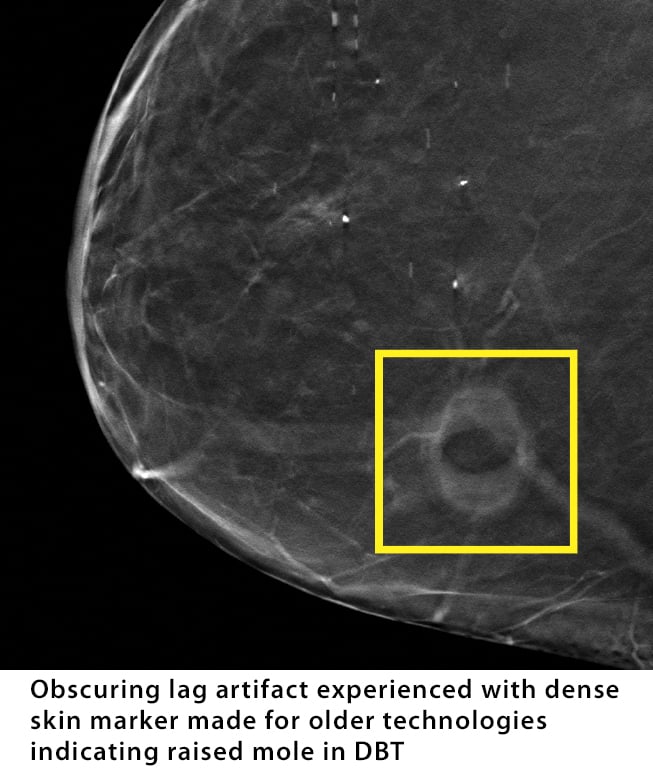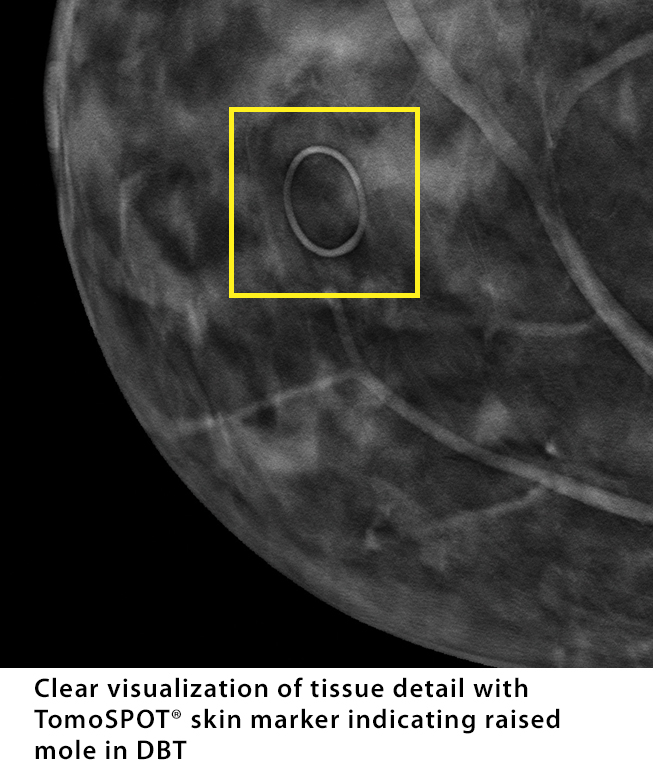
Detecting breast cancers in their earliest stages is every radiologists’ mission. Having the right tools to help them do it, is ours.
I recently attended an imaging conference sponsored by a renowned breast center in New York City and had the opportunity to speak with radiologists about the value of mammography skin markers. One radiologist shared with me that, “there is a definite boost in confidence for most radiologists when converting to tomosynthesis (3D mammography), especially for those that read images in other modalities.”
Radiologists reading for breast imaging may not always know the details about the suppliers of the products they routinely use.
However, when it comes to skin markers for identifying nipples, moles, scars, palpable masses, and non-palpable areas of concern, many will say they most certainly have their preferences - visible, yet not so bright that it’s distracting.
And, most importantly, they don’t want dense markers that can potentially obscure tissue.
Advancements in technology require advanced tools
With newer, more sensitive equipment, changes to the level of radiolucency of skin markers is necessary.
Some facilities may be accustomed to using the same skin markers they’ve used since the days of analog and may not see a need to change markers when they upgrade equipment. As a result, their interpreting radiologists may not be aware of the differences that exist between skin markers made for analog, digital, or 3D mammography until they see a side by side comparison.
Since digital breast tomosynthesis was first introduced, many radiologists share the same feedback.
After converting to 3D imaging, they are completely unprepared for the “slinky” or lag artifact they experience with their current skin markers which were made for older technologies
We often hear that radiologists can become so distracted from this artifact, which is caused by the denser composition of skin markers made for older technologies, that they fear that important details in the breast tissue may be obscured.
Out of sheer frustration with the transition and appearance of images, some radiologists will temporarily make the drastic change to stop marking only to discover that reading without skin markers isn’t a viable solution.

TomoSPOT® skin markers were the first and only skin markers specifically developed for the improved sensitivities of 3D imaging when digital breast tomosynthesis equipment was first introduced in the U.S.
The intent behind the creation of TomoSPOT was to provide the perfect balance of marker density so that it would image just enough to communicate landmarks on the breast to the interpreting radiologist with minimal artifact under the 3D portion of the exam.
Architectural distortion in 3D mammography reinforces importance of scar markers
Without the of use of skin markers, there can be a great deal of pertinent patient history that is not perceived when interpreting an image.
As a result, the way that radiologists interpret the images can be impacted and directly influence the rate of patient call backs. This issue became apparent in digital breast tomosynthesis for those facilities that stopped marking post-surgical scars.
At the conference, two of the speakers spoke about this issue:
The first speaker said, "It is really important that the technologists tell you all of the pertinent patient facts. Often the sensitivities of tomosynthesis result in scars being seen many, many more years down the road where they cause problems.”
The second speaker, Dr. Stamatia Destounis of Elizabeth Wende Breast Care (Rochester, NY), shared in her Challenging DBT Cases session, “The presence of architectural distortion on a mammogram, without knowledge of any prior surgery, can cause the radiologist to question the area, which frequently results in the request for additional imaging. Patient recall for additional imaging can often be minimized with the use of a scar marker at the original mammogram, and in subsequent years. Architectural distortion can be especially difficult and frequently can only be seen on Tomosynthesis. In dense breasts you can sometimes lose the forest for the trees. It’s imperative to use scar markers that don’t hide important details or obscure microcalcifications.”
I also spoke with Diella Mrnaci, Associate Director of Radiology, about her views on skin markers in both 2D and 3D mammography. “You want a marker to do its job, and nothing else. You need a happy medium between lucency and visibility.”
This is why the right level of lucency and visibility of skin markers for the particular technology being used is essential for detecting breast cancers at their earliest stage. And it is also why at Beekley Medical, we make it our mission to be the first to market with the skin markers that meet your changing and specific needs.
Defining value in more ways than one – The Beekley Medical Difference
The value a radiologist sees is often very different than that of a technologist or mammography supervisor.
In her administrative capacity, Lesley Dykman, Mammography Manager at Northwest Gynecology Center (Portland, OR), shared her top reasons for working with Beekley Medical over the years: quick response, honesty, and integrity.
When asked how she would describe her experiences with Beekley to other colleagues, Lesley told us four things immediately spring to mind:
- Quality customer service
- Accurate quotes
- Dedication to women’s health
- Continuous focus on product improvement
Lead Mammographer Robyn Hadley shared; “After speaking with one of your knowledgeable associates I learned more than ever before about the technical component of skin markers; how they’re made, and what makes one different from another.”
At Beekley Medical, our customer team is comprised of dedicated Account Managers and National Accounts Managers who work with both the end user and supply chain management to provide maximum value to patient care, clinical efficacy, and the healthcare system’s bottom line.
We understand the critical nature our products serve in your facilities which is why we have a no-backorders policy and strive to ship all orders within 24 hours. We take quality very seriously and back our products with a 100% guarantee to perform as promised.
It is also why we invest in supporting your continuing education needs. Whether it’s through conference sponsorships, webinars, CE activities, or sharing best practices from your peers, we understand that the strength of the imaging community relies on well-informed professionals keeping abreast of changes that impact us all from technology to governing regulations to reimbursement models.
I invite you to experience the Beekley Difference for yourself. Contact your Account Manager 1-800-233-5539 or info@beekley.com and ask to learn more about the skin marker options we offer that are the ideal for your imaging technology and for samples to perform a side by side comparison with your current markers.

Kathy Kaschuluk
Product Manager


